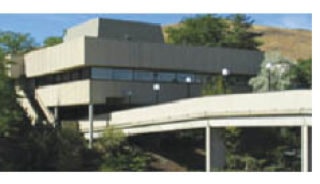The current proposal to locate sport facilities on the Okanagan College Kalamalka Campus site appears to have broad community support, however I think it is worthwhile to consider why the college site is currently configured the way it is before we proceed. The following presents a review of the site history.
The general area of the college site was designated Agricultural Land Reserve in 1974. Apparently, the area where the sports facilities are proposed was historically used for pasture but has not been cultivated or grazed for the past several decades. Note that about half of the Class 1-4 land in the Okanagan ALR, as well as in the provincial ALR, is not currently used for crops. These lands are being protected for food production for future generations.
In 1979, Lots 4 and 5 (the site) were transferred from the Ministry of Forests to Okanagan College. I was the Professional Agrologist retained by Doug Huggins, the Vernon architect who designed the college, to carry out an agricultural assessment of the site and to assist in the preparation of an application to the Agricultural Land Commission to use a portion of the site for the college facilities.
The agricultural capability of the site ranges from Class 1 for the level areas to Class 7 for the steep slopes of the ravines. With irrigation, a wide range of crops, including vegetables, grapes and tree fruits, could be grown on the site. These lands have essentially the same soils and climate as their counterpart benches across the lake on Kidston Road where the orchard and dairy are located. The intent of the original ALR application was to use the less agriculturally suitable areas of Lot 5 for the college facilities and to save the larger, level area of Lot 4 for future agricultural or forestry use, related to the college curriculum. The ALC supported the proposal, stating (in part): …to allow for the construction of a college campus and related uses on lot 5, …subject to the condition that no buildings or structures be located on …lot 4…it is the commission’s understanding that lot 4 is to be used by the college for agricultural or forestry-related uses.
Three years ago, we saw how passionately Coldstream voters feel about agricultural land protection when the sports complex was proposed on the Spicer block area of the Coldstream Ranch. Most of us were not against the development of sports facilities in the community, we just didn’t want to see it on prime agricultural lands.
There are two major reasons why I question putting the proposed sports facilities on the Kalamalka Campus site. First, 30 years ago, Okanagan College and the ALC made an agreement that allowed the construction of the campus while also protecting the good agricultural land for future research use. Why is this no longer valid? Why would we try to undo decisions and commitments that were rational then and are even more valid today in light of current global food production issues? Secondly, it would be very difficult and expensive today to put together a comparable college site in the Okanagan with 10 acres of highly arable land attached that could be used for crop research. There are currently no agricultural courses taught at the college but Dean John Lent supports the idea of incorporating food production courses into the curriculum. I have been working with him and Mayor Jim Garlick on the development of a crop research plot at the college which is currently under construction in the area between the parking lot and the ravine. Clearly the desire is there to support agricultural courses and to start doing crop research.
In summary, it is encouraging to be moving forward with constructing a crop research plot at the campus site but I believe we should also be protecting the prime land that was set aside for this purpose in 1979. I believe that it will be difficult for the ALC to reverse their original, well thought out decision. However, if a decision is made to allow the sports facilities, Coldstream has requested that a legal covenant be placed on the five-acre portion of the remaining area of Lot 4. Five prime acres would be taken up by the running track, the turf field and associated buildings while the capacity to develop crop research plots within the adjacent five-acre site would be retained. In my opinion, this would be an acceptable compromise.
Paul Christie
